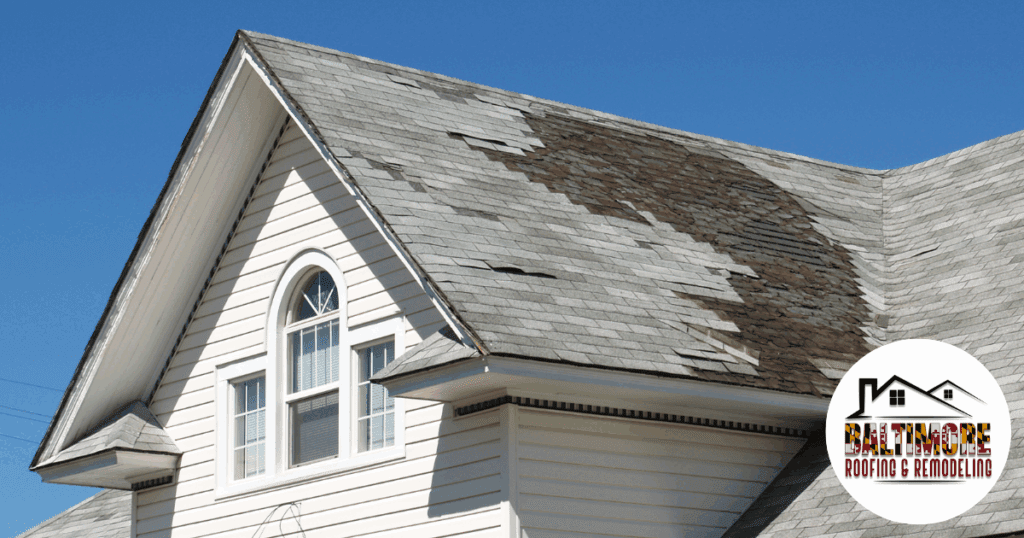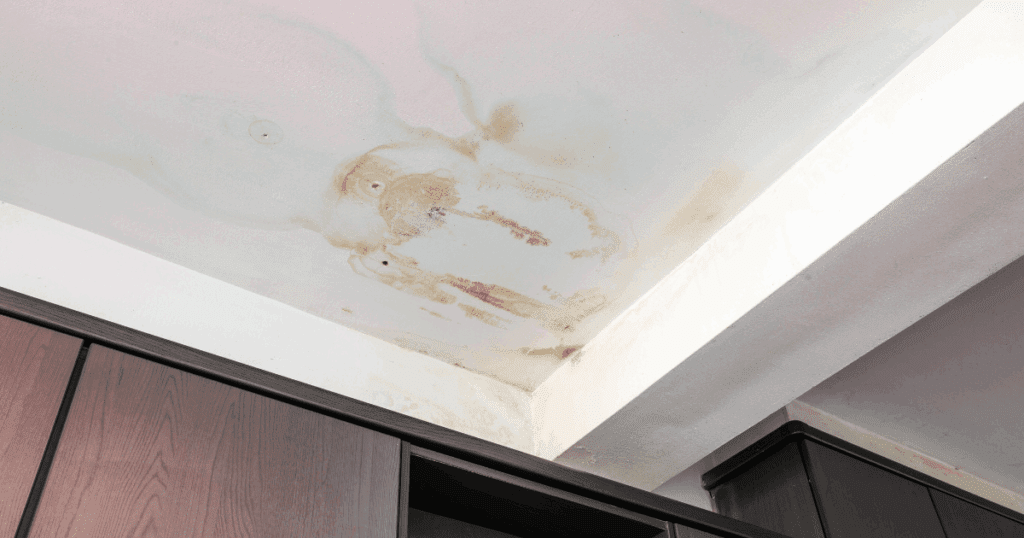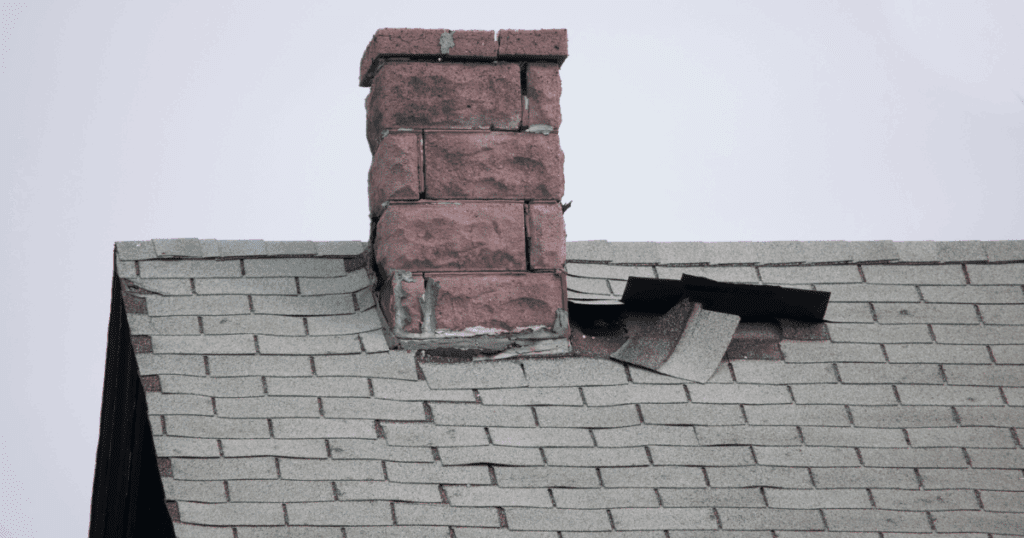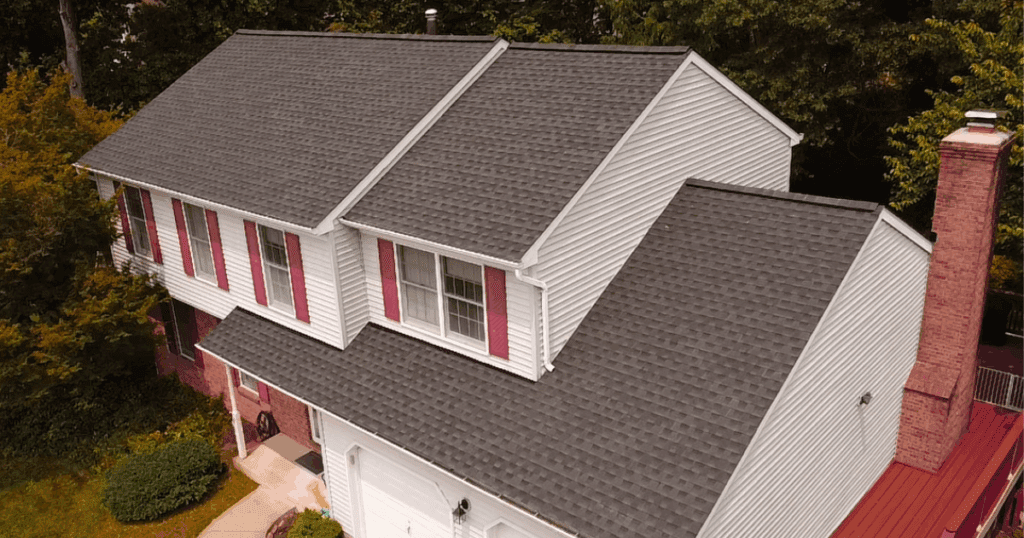When to Replace Your Roof: Unmistakable Signs Your Home Needs a New Shield
June 10, 2025

Have you considered the potential hidden issues with your Maryland home’s roof? It’s your property’s main shield, constantly battling intense summer heat, heavy rain, and winter snow. This consistent exposure plays a big role in your home’s structure and energy use, but even the strongest roofs don’t last forever. Over time, materials naturally wear down, which can leave your home vulnerable to damage. For many homeowners, the question of when to replace your roof is a critical one, fraught with financial considerations and the fundamental need to protect their most significant investment. Ignoring the subtle and not-so-subtle cries for help from your roof can lead to a cascade of catastrophic and costly damages that extend far beyond the shingles.
At Baltimore Roofing & Remodeling, we believe that an informed homeowner is an empowered homeowner. Proactively understanding the health of your roof is not a task to be deferred. This comprehensive guide will walk you through the telltale signs that your residential roof is nearing the end of its functional life. By learning to recognize these indicators, you can move from a reactive state of emergency repairs to a proactive position of control, ensuring the continued safety, integrity, and value of your home.
Heeding the Warning: Comprehensive Signs of Roof Damage
A vigilant eye can often spot the early warnings of a failing roof long before a leak makes its way into your living room. We recommend performing a thorough visual inspection at least twice a year—once in the spring and again in the fall—and after any major weather event. From the safety of the ground, use binoculars to get a closer look. What you’re looking for are deviations from the uniform, healthy appearance of a well-functioning roof.
Shingle Deterioration: The Primary Indicator
The condition of your shingles is the most visible barometer of your roof’s health. Over time, the asphalt and granules that compose them break down under constant UV exposure and thermal cycling.
Curling and Clawing: Look for shingle edges that are lifting and curling upwards, or for shingles that are “clawing,” with the middle section puffing up. This is a definitive sign of advanced age and heat damage. The shingle is shrinking and losing its flexibility, making it brittle and highly susceptible to being ripped off by wind.
Widespread Granule Loss: Take a close look at your gutters and downspouts. Are they filled with what looks like coarse black sand? These are the protective granules from your asphalt shingles. While a new roof will shed some excess granules, a significant and continuous accumulation means the shingles’ primary layer of protection against UV rays and physical damage is wearing away, leaving the asphalt core exposed and vulnerable to rapid deterioration.
Cracking and Blistering: Thermal shock—the rapid expansion and contraction from day/night temperature swings—can cause visible cracks in your shingles. You may also notice blisters, which look like bubbles on the shingle’s surface. These are often caused by trapped moisture or poor attic ventilation superheating the roof deck, essentially “cooking” the shingles from beneath. Both cracking and blistering create direct pathways for water to penetrate the shingle.
Dark Streaks and Algae Growth: Notice any long, dark streaks running down your roof? This is often an algae called Gloeocapsa magma. While primarily a cosmetic issue in its early stages, it can, over time, feed on the limestone filler in the shingles and hold moisture against the roof surface. This promotes rot and deterioration. Similarly, patches of moss, which are more common on shaded, damp areas of a roof, can lift shingles and trap significant amounts of water, leading to serious decay of the shingle and the underlying roof deck.
Flashing and Sealant Failure
The areas where your roof meets a wall, chimney, skylight, or vent are its most vulnerable points. These intersections are sealed with flashing.
- Rusted or Cracked Flashing: Metal flashing can rust over time, especially if its protective coating has worn off. The expansion and contraction of the metal can also cause it to crack or pull away from the structure it’s meant to seal.
- Deteriorated Sealants: The caulk or tar used to seal around the flashing can dry out, shrink, and crack with age, creating obvious gaps for water to exploit. A failure in the flashing system is one of the most common sources of roof leaks.

The Unwelcome Guest: Investigating Leaking Roof Signs
Perhaps the most alarming and undeniable sign that you have a roofing problem is the presence of water inside your home. However, the first signs of a leaking roof are often subtle and can go unnoticed for months, allowing hidden damage to proliferate.
Tracking the Intrusion
- Interior Stains: Water stains on your ceilings or walls are a classic indicator of a breach. These stains may appear as brownish rings and can feel soft or damp to the touch. It’s crucial to understand that water rarely drips straight down. It can hit the roof deck, run down a rafter, and travel several feet horizontally before it finds a spot—like a light fixture or ceiling seam—to finally drip through. The visible stain may be far from the actual source of the leak.
- Attic Inspection: Your attic is the frontline for leak detection. On a bright, sunny day, safely go into your attic (without stepping on the drywall ceiling). Turn off the lights and look up. Do you see any pinpricks of daylight filtering through the roof boards? If you can see light, water can most certainly get in. Even without visible light, look for damp, compressed, or moldy insulation. Check the underside of the roof decking and the rafters for water streaks, dark marks, or active drips. A musty, mildew-like odor in your attic is another telltale sign of a persistent moisture problem that needs immediate investigation.
The Dangers of Hidden Leaks
A slow, chronic leak can be far more destructive than a sudden, dramatic one and a telltale sign of when to replace your roof. This insidious moisture can lead to:
- Wood Rot: The prolonged dampness will rot the wooden roof decking, rafters, and ceiling joists, compromising the structural integrity of your entire home.
- Mold and Mildew: Where there is moisture, mold will follow. Toxic black mold can proliferate in damp insulation and drywall, posing a serious health risk to your family.
- Compromised Insulation: Waterlogged insulation loses its R-value, meaning it can no longer effectively insulate your home. This leads to higher heating and cooling bills as your HVAC system works harder to compensate.
- A Sagging Roof Deck: This is a severe and urgent sign of a leak that has likely been present for a long time. The water-damaged plywood or OSB of the roof deck has softened and is beginning to fail under the weight of the shingles. If you notice any sagging, drooping, or a “swaybacked” look to your roofline, it is a structural emergency that requires immediate professional attention.

The Missing Pieces: Why Missing Shingles Are a Major Concern
A few missing shingles after a powerful windstorm might seem like a minor, easily fixable issue. However, they can be the canary in the coal mine for more significant, systemic problems. Each shingle interlocks with and overlaps the others to create a continuous, watertight shield. When one is lost, it’s like losing a scale on a suit of armor.
The exposed roofing underlayment and nails are now directly subjected to sunlight and rain. The UV rays will quickly degrade the felt or synthetic underlayment, making it brittle and useless. Water can now seep in around the nail holes of the surrounding shingles, beginning the destructive cycle of a hidden leak. Furthermore, a single missing shingle can create a “zipper effect” in high winds, as the wind can now get underneath the edges of the adjacent shingles, creating a lifting force that makes them much easier to tear off. While replacing a few shingles can be a temporary fix, widespread or recurring loss often points to a systemic failure. It’s a strong signal of when to replace your roof when the shingles’ adhesive strips have failed with age and the roof can no longer withstand the forces of nature.
The Inevitable Factor: Understanding Roof Age Replacement
Even the most robust, well-maintained roof has a finite lifespan. The materials used in its construction will inevitably degrade over time due to exposure. Knowing the age of your roof is a crucial piece of information in determining when to replace your roof. If you don’t have the records from a previous owner, a professional roofer can often provide a reliable estimate based on the material and its condition.
Different roofing materials have vastly different life expectancies:
Asphalt Shingles (3-Tab): The most common and affordable option, these typically last 15-20 years. Their thinner profile makes them more susceptible to wind damage as they age.
Slate or Tile Roofs: These are “lifetime” roofing systems and can last 100 years or more. Failure is typically due to cracked individual tiles from impact or the deterioration of the underlying support structure.
Architectural/Dimensional Asphalt Shingles: These are thicker, heavier, and offer a more varied, textured appearance. Their layered construction makes them more durable, and they generally have a lifespan of 25-30 years, with some premium versions warrantied for up to 50 years.
Metal Roofs (Standing Seam): A significant investment upfront, but metal roofs can last 50 years or more with minimal maintenance. Their signs of failure are more related to sealant breakdown, fading finish, or denting from hail.
If your asphalt shingle roof is approaching or has surpassed the two-decade mark, it is wise to start budgeting and planning for when to replace your roof, even if there are no immediate, glaring signs of damage. An older roof is significantly more susceptible to failure during a major storm and may no longer meet the requirements for your homeowner’s insurance policy, potentially leaving you underinsured when you need it most.

Don’t Wait for a Disaster: The Proactive Approach to Roof Replacement
Your home is a sanctuary, and a sound roof is its most vital shield. By learning to identify the signs of a deteriorating roof—from the subtle curling of shingles to the unmistakable evidence of a leak—you can take control of the situation before it escalates into a major catastrophe. Regular inspections and a clear understanding of your roof’s age are your best defenses against the unexpected and compounding costs of neglect.
If you have observed any of the signs discussed in this guide, or if your roof is simply getting on in years, we urge you to contact a qualified and reputable roofing contractor. A professional inspection from the experts at Baltimore Roofing & Remodeling can provide you with a clear, honest, and comprehensive assessment of your roof’s condition. We will help you understand your options and make an informed decision that is right for your home and your budget. Investing in a timely roof replacement is not just an investment in your property; it’s an investment in your safety, your comfort, and your peace of mind.
Leave a Reply Cancel reply
© Copyright 2025 Baltimore Roofing And Remodeling LLC